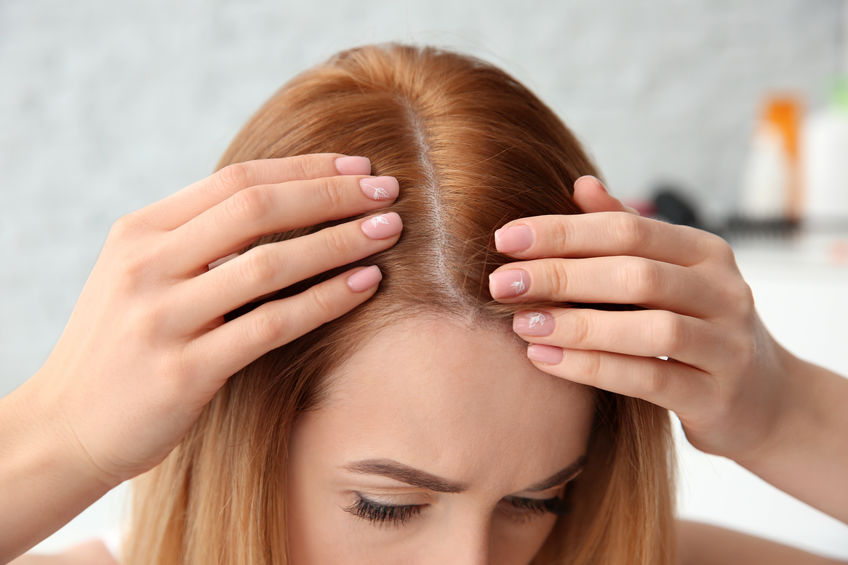Typically, hair consists of three stages. Hairs increase by an average of 1–2 cm per 30 days during the practical growth phase, which lasts two years or over.
The hair then enters a sitting phase that can last approximately 100 days. A few of the sitting hair tends to fall out from this stage.
Diabetes can disrupt this procedure, trying to slow hair development. Diabetes could also make you end up losing more strands than average.
That hair decline is not limited to one’s head. Hair loss can occur on your hands, lower body, as well as other parts of the body. Once hair grows back, this does well at a lesser speed than usual.
Diabetes patients tend to suffer from a condition known as alopecia areata.
The immune framework strikes the follicles in alopecia, resulting in spots of loss of hair also on the head and other areas of the body.
The Cycle of Hair Growth
Hair growth consists of three stages: the growth phase (anagen), the regression phase (catagen), as well as the resting phase (telogen).
The exogen stage corresponds to hair thinning but does not occur at all times during the process. Finally, the ketogenic phase is a brief period after losing hair when the hair follicle sits empty.
Its hair follicle appears to be based all through kerogen. However, the average frequency is more significant in AGA, which partly explains baldness.
Compared to the original hair cycle, the follicles may take an alternate path wherein the telogen phase wraps up with new strands. You can also go for a hair transplant.
Does diabetes cause hair loss?
Diabetes could also be a potential risk for hair growth. High blood glucose levels (hyperglycemia) could harm blood vessels and decrease the quantity of oxygen and nutrients supplied to tissues and cells.
Oxygen deprivation and nutrients could also affect hair, leading to decreased healthy hair, shrinking, and breakdown. Other diabetes-related factors can also cause hair loss –
- Alopecia areata (hair loss)
Alopecia areata is just a form of hair loss that is more common in people with type 1 diabetes.
That’s an autoimmune condition in that the immune system harms hair follicles, resulting in spots of loss of hair just on the hairline or anywhere on the body.
Alopecia areata could be inheritable, and it commonly occurs in parents with all other autoimmune conditions, such as t1d, rheumatoid arthritis, thyroid issues, lupus, or Addison’s illness.
- Increased blood glucose levels
Unchecked or undiagnosed diabetes can cause a person’s blood glucose level to be dangerously high. Consistently high blood sugar could pose a risk to the body’s cells, organ systems, and arteries.
Blood vessel harm can constrain blood circulation, culminating in specific cells receiving less oxygenated blood than they require. In addition, this defect can disrupt the standard growth period of hair follicles, resulting in hair loss.
- Strain and hormone levels
Diabetes can lead to chronic stress in an individual’s body. In addition, pressure can cause hormone variability, impacting hair fall.
- Blood Sugar Control
If you have high blood sugar and have been undergoing increased sugar levels, bringing your insulin levels back into normal scope may assist in slowing back and even reversing hair loss.
Because high blood sugar levels are linked to vascular disturbance, poor blood flow, and hormonal problems, keeping your blood sugar levels within acceptable bounds can hopefully maintain one hair cycle consistent.
Your normal glucose range is determined by your age, frequency of hypoglycemia, and length of diabetes. as well as your average lifespan
Blood sugar levels must be 80-130 mg/dL upon abstinence for 8 hours or over, and much less than about 180 mg/dL 2 hours of eating. These goals should be discussed with your medical professional.
Diabetes hair regrowth
Eradicating troublesome food products and being more involved are the top priorities when growing new hair with diabetes.
Following proper steps can take greater power over one’s sugar levels while using low amounts of meds.
Even though this method can keep your hair fall from rapidly deteriorating, your hair cells may require stimulation to become active once more.

